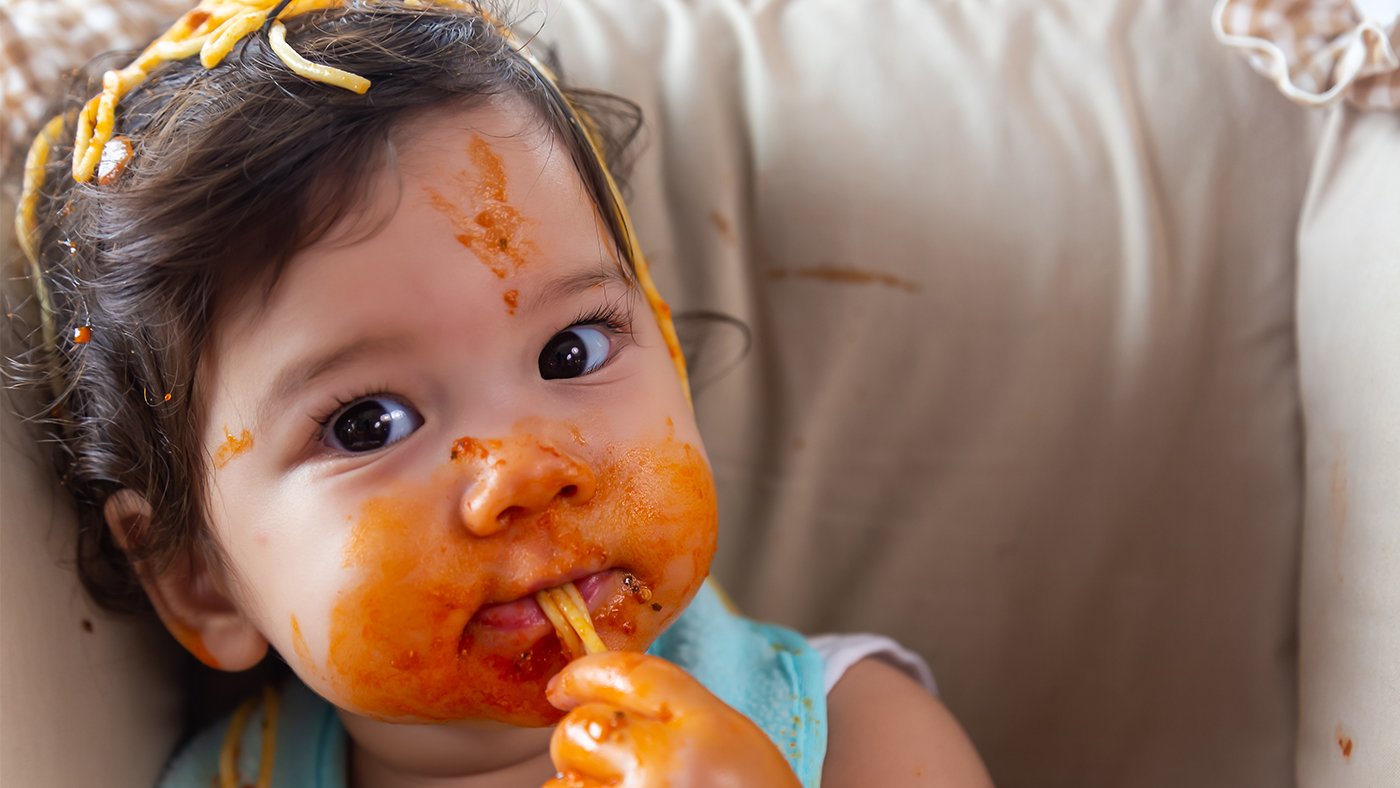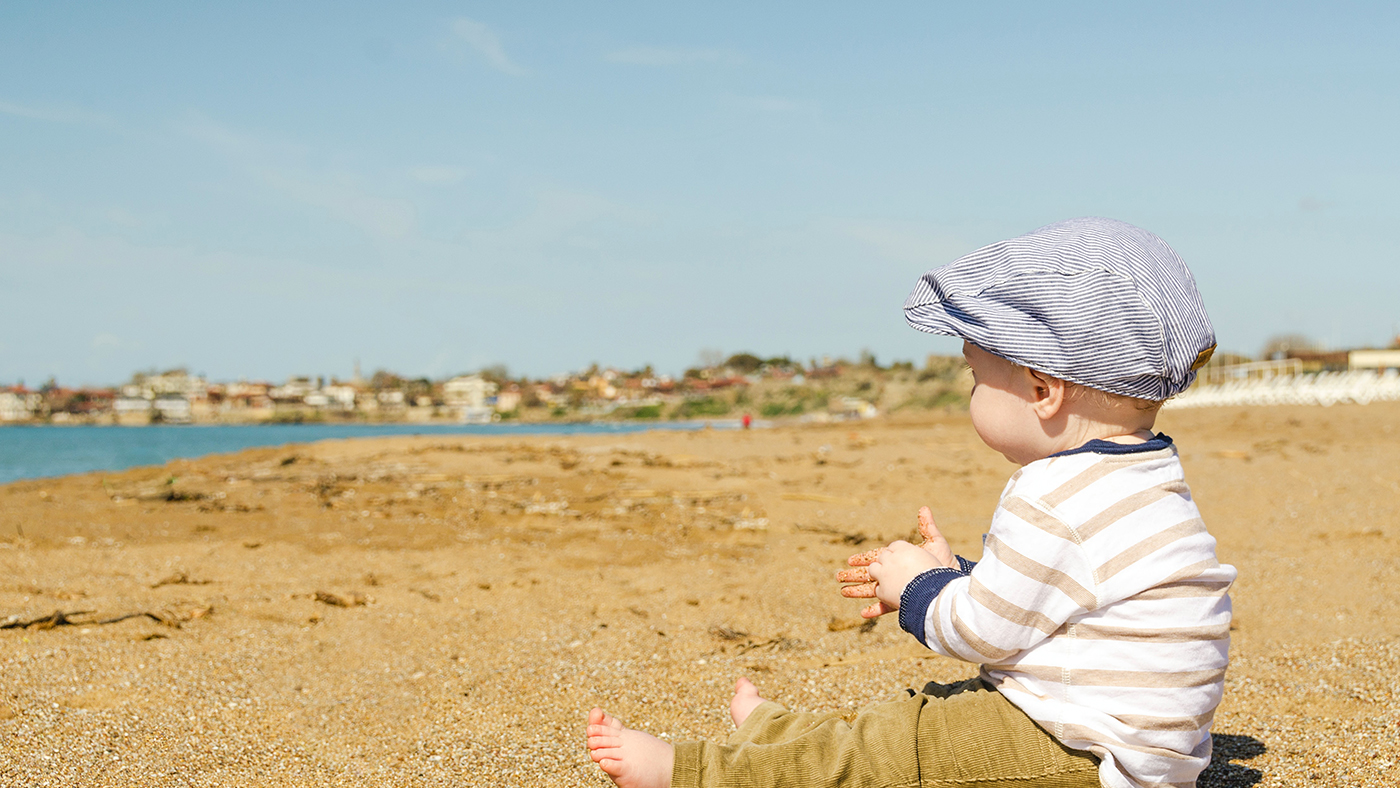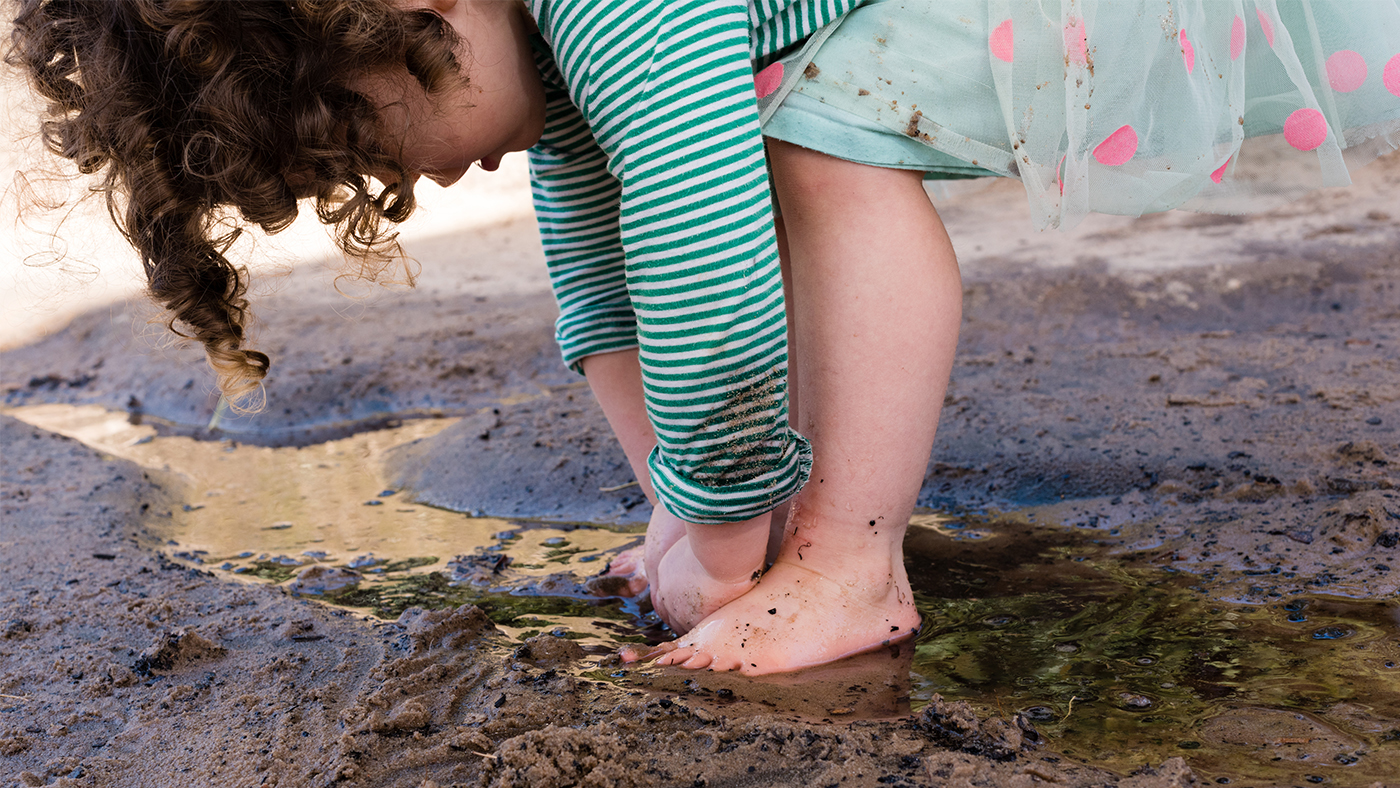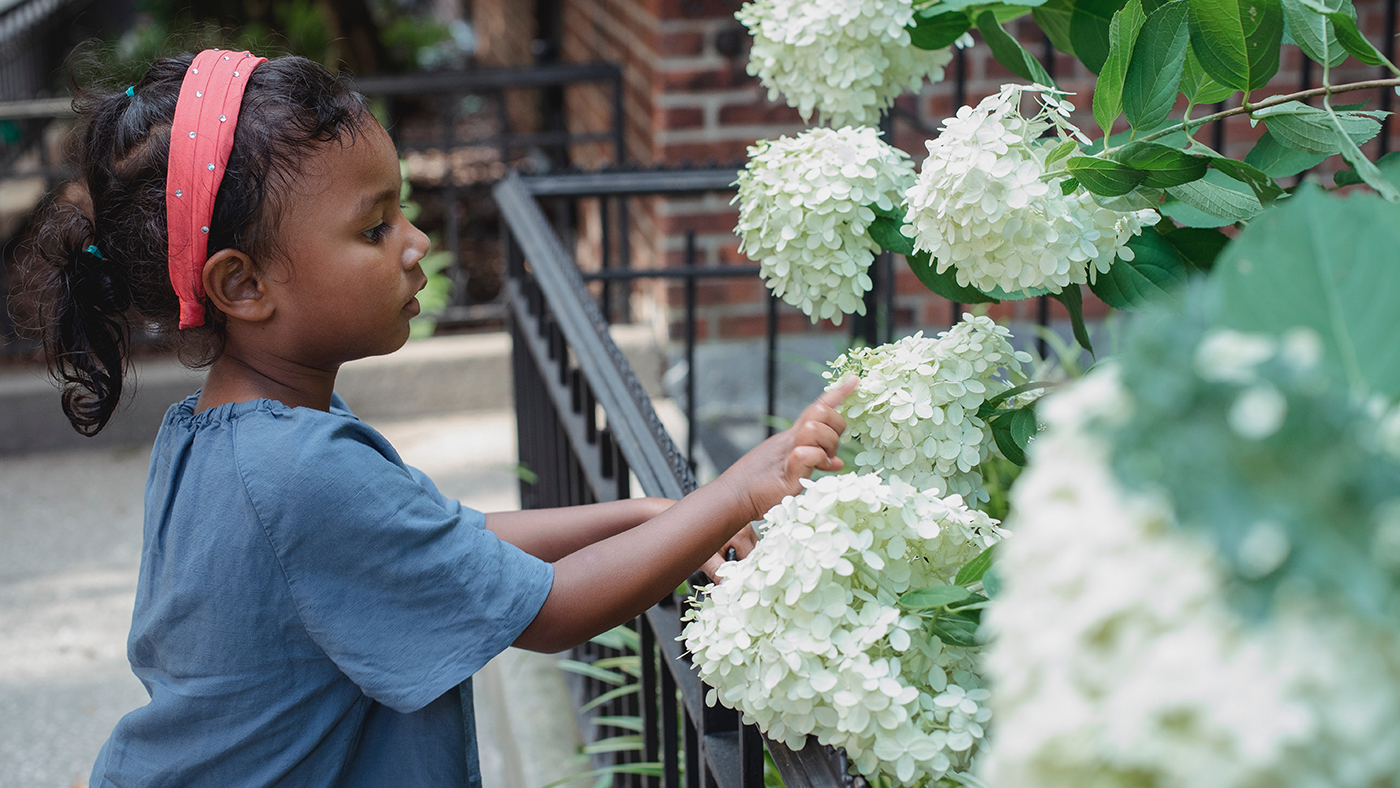Sensory development by age - what to really expect
- Sensory

From the day your baby is born, they begin to learn about the world around them through their senses. Sensory play provides an essential foundation for children’s overall development. It is very important that children have the opportunity to explore their environments by using all their senses, as this helps to contribute to healthy brain development through the growth of neurological connections. These are the building blocks of the brain. Our app has lots of ideas to help you support your child’s sensory development from birth. In this article, we explain more about why sensory development is important and you’ll find ideas to get you started with supporting your child’s sensory development.
Senses (vision, hearing, touch, taste, smell, proprioception, vestibular sense, interoception)
The development of the senses is key in underpinning all other areas of development, and the acquisition of all skills comes from using these sensations to understand the world around us. Sensory development requires the development and coordination of both gross and fine motor skills, and its development contributes to brain development as it stimulates healthy neurological connections.
Many people are aware of the five key senses (vision, hearing, touch, taste and smell), but there are also three other, lesser-known senses at play: the vestibular system, the proprioceptive system and interoception.
The vestibular system is known as our balance centre and it receives information about our body's movements. This is one of the earliest senses to develop through the movement of being carried in the womb. The development of this system is linked with the development of our inner ear and therefore can be stimulated by changes in the position of our head. It is responsible for our balance, posture and movement sensations.
Proprioception involves the awareness of our body in space. This sense is first developed while in the womb, and when a baby is born they begin to create an awareness of their body through touch and movement. The information they gain by exploring and understanding how their body moves allows them to create a body map so they can understand their positioning and how to interact with the space around them.
Interoception is believed to be the way we perceive the sensations that occur inside our body, such as our breathing, heart rate, hunger, the need to go to the toilet and feelings associated with emotions. It is an innate awareness that is there to keep us safe. Many of these sensations remain unconscious but there are some feelings and sensations that we become more aware of when stressed or panicked.
Supporting sensory development
Your child will be exposed to a multitude of different multi-sensory environments from birth. From accompanying you to a bustling shop in a buggy to exploring the local park on foot as a toddler or simply spending time at home, your child will experience a wide range of smells, sights and sounds, some that they will enjoy, and others that they might find overwhelming, especially at first.
Sensory play for babies
Babies’ senses start to develop before they are born and when they enter the world they will experience a whole host of new sensations. They will gradually begin to understand and use all this information that they gain from their senses.
We know that babies are born with the ability to see things such as outlines, light and movement, and can see objects about 30cm away from them. As eyesight develops, they begin to focus and understand depth perception, colours and people.
It is helpful to gently offer your baby a range of new, varied objects to hold in front of their face and to explore by perhaps slowly moving them from side to side. You could extend this, as your baby grows, by offering a greater range and variety of objects in a ‘treasure basket’. These could include everyday items of different weights, materials, shapes and sizes.
Exploring light together is also great fun. Initially more diffused light sources should be used, moving on to using torches, fairy lights or star projectors, and sharing books and pictures that contain high-contrast pictures.
Our body’s biggest organ is our skin, and when we are touched the receptors in our skin send a message to our brain of the connection and it releases endorphins into our body (the happy hormone). Touch is a very important sense, especially to newborn babies. Skin-to-skin contact with you or other close family members is hugely beneficial for developing a bond with your baby and helps regulate body temperature, calms your baby and lowers both your and your baby’s blood pressure and heart rate.
It’s amazing that babies can detect the smell of their mothers while still in the womb and their sense of smell will continue to develop and get stronger over their first five years as they encounter a greater range of smells. Interestingly, our sense of smell is also closely linked with taste and memory.
Hearing also develops in the womb and the majority of babies are born with fully developed hearing. You will notice that your baby may be easily startled by noises or is able to be soothed by soft sounds.
As your baby develops, they will respond to your voice and the voices of other familiar people. Talking, singing and listening to music with your baby is a lovely way to engage and/or soothe them. Your baby will also experience a wider range of sounds in the environment, such as household sounds like a doorbell or a dog barking, to other sounds encountered when you are out and about, such as birds singing, traffic and animal noises.
Babies’ taste buds form while they are in the womb, and by birth they can taste bitter, sour and sweet flavours. Taste starts with our sense of smell; the brain picks up the smell through the nose, and then when saliva and taste buds combine we get the sensation of taste. When weaning, encourage your baby to explore a mixture of both bitter and sweet vegetables.
As your baby starts to eat solid food, this could be an opportunity for them to explore different textures. This might be pieces of fruit, such as banana and strawberry, that they can squeeze in their fingers and feed to themselves. Give them safe objects to explore and mouth, that are different to their day-to-day toys, such as wooden spoons, materials, stainless steel kitchen utensils and brushes.
When your baby can hold their head steady, they might enjoy some gentle bouncing games and rhymes. These gentle movements will help them to develop their balance and awareness of their body. You will also be encouraging this sense to develop when you rock your baby and hold them in different positions.
As your baby grows, they will begin to explore movement more independently. Using baby gyms and mirrors helps encourage these early movements, along with other toys to stimulate movement. Likewise, playing together with toys that your baby can follow with their eyes, such as cars or trains, are great for the visual part of sensory development. Rolling these toys and encouraging your baby to follow the motion can support them in using eye tracking.

Sensory play for toddlers
We have learned that most of our senses are developed in the womb and skills related to our senses are refined through play and experiences. One big thing that happens to the senses while we are still young toddlers is something called sensory integration. This is where all the senses learn to process information and operate together.
Your toddler will be mastering sensory skills and skills in other streams of development, including physical skills. They will be able to use their growing ability to move and fine motor abilities to explore the world around them.
As your toddler starts to walk more confidently, they will be eager to walk in different places, and will be beginning to investigate new places on foot. They will start to climb using their hands and feet. All these activities will link to their developing sensory awareness.
The sense of interoception will be developing more fully as your child grows. They may notice their heart rate or breathing change when they are running or when they are upset. It is helpful to point out these changes to your child and explain what is happening. Talking to your children about these feelings and sensations will help them to acquire the language they need to express them. Your child may enjoy yoga or exploring breathing techniques and mindful activities that help them to relax. Playing physical games can also contribute to the development of this sense.
Your toddler may enjoy the opportunity to use their full body to begin experimenting with movement, observing the effects that their movements have on their environment. For example, they could enjoy the feeling of jumping into a muddy puddle, and watching droplets splash all around. Supporting your child to have opportunities to climb, swing, jump, roll and move over and under objects is a wonderful way for them to develop their vestibular sense. You may notice your toddler seeking out opportunities to explore all of these ways of moving, which is a positive sign of a healthy development!
Try exploring outdoors in different kinds of weather and watch how your child reacts to how their surroundings change in the sun, rain, wind and snow – just make sure that you have a pair of wellies and a raincoat to hand! These differing environments will also allow your child to encounter a range of new sounds, some loud, some soft. Listening to these together is a wonderful way to tune in their senses.
At this stage, your child might begin to notice the feelings associated with needing to use the toilet, which may prompt them (and you) to begin toilet training. Similarly, they may notice when they begin to feel hungry. Your toddler may start to show preferences for different types of food, or particular textures. They might also develop an awareness of different smells, offering up comments on what they like and dislike!
It’s a fantastic idea to create opportunities that allow your toddler to experiment with textures and smells. Sensory trays are a great way of doing this, and these can be created easily with different household materials. For example, you could put blobs of hair gel, shampoo, washing up liquid and other similar substances on a baking tray for your child to play with using their fingers. You could also try exploring smell by taking a trip to a garden centre to smell different plants and herbs, or even plant some of your own at home if you have the room. If it’s not possible to get to a garden centre, sprigs of cooking herbs such as rosemary and basil can be found in supermarkets and make a great alternative experience for your children to smell or bring home to play with.

Sensory play for preschoolers
As your child grows older, they can develop the skills to be more independent in self-care, using the toilet independently and taking a more active role in identifying and sharing their own needs, such as hunger, tiredness and thirst. It is helpful to encourage this independence and discuss needs together throughout the day. Talk about your own needs with your child, and how you identify them. If you feel hungry, for example, tell your child that you know this because your tummy has rumbled!
You may notice that your child is seeking out physical activities which explore a wide range of movements, such as running in open spaces, finding opportunities to climb, jump, spin and swing along, not only outside in the park but perhaps when navigating furniture at home!
As their awareness of their body in space or ‘personal body map’ is more defined, they may grow in confidence and take greater risks with their movements, for example, climbing higher, balancing on more tricky surfaces, and so on. It may feel hard not to caution them to “Be careful!”, but allowing them to test their physical skills and challenge themselves is an important step in their developmental journey. Weighing up the risk alongside the developmental benefit can be helpful when we are feeling nervous about our child’s adventurous play.
Also, at this stage in your child’s sensory development, they may have more of an awareness of music and sounds. They might have favourite songs and start to link music to special occasions or moments in their lives.
Visually, your child’s hand-eye coordination might develop, for example, they might be able to hit a moving object such as a tennis ball with a racket or catch a bean bag. These skills show that your child’s senses are becoming integrated.

What to do if your child does not like some sensations
At My First Five Years, we know that every child is unique and all children follow their own developmental journey. We also understand that you might be concerned that your child isn’t mastering some skills as they develop.
When thinking about sensory development, we all have different sensory preferences (even as adults) and your child might enjoy some sensory experiences and not like others quite so much. For example, some children may be startled by loud hand driers, others may not like to touch certain textures. We are all different and that’s ok!
By continuing to offer a range of different experiences for your child, with no pressure to participate, we are allowing them to develop in their own way at their own speed. Over time, as you explore together, adapting activities can help to meet your child’s sensory preferences, so, for example, if they don’t like the swing going fast, start swinging them gently at first. If they are reluctant to touch materials that are wet or sticky perhaps have a cloth next to them as they play so they can wipe their hands or give them a stick to touch it with at first.
Why play-based learning is beneficial for sensory development
Play-based learning is one of the most effective ways of developing any skills in young children. During play, children can take risks and engage their imagination. The lack of structure involved in play-based learning makes it easy to expand and adapt as you go along, following the interests of your child.[1]
As our founders here at My First Five Years, Jennie and Alistair, say, “Play is a vehicle for learning.”
When it comes to developing sensory skills, play-based learning continues to have many benefits. Keeping play child-initiated and open-ended makes learning much more accessible and also less daunting. Studies have shown that adult-directed play and encouraging children to work on aspects that they are not ready for can lead to them feeling discouraged or avoiding joining in with activities.[2]
Play-based learning is also good for developing your child’s creativity, as they can take activities in their own direction. They are also more likely to remember things that they have discovered themselves, rather than being explicitly told.[3]
In our app, you will find ideas and play-based activities that will help your child to master skills in our six streams of development, including sensory development. You can download our app here to get more ideas today.
References:
[1] Natalie Robertson, Anne-Marie Morrissey, Elizabeth Rouse. (2018). Play-based learning can set your child up for success at school and beyond.
Available: https://theconversation.com/play-based-learning-can-set-your-child-up-for-success-at-school-and-beyond-91393
[2] Nancy Carlsson-Paige Geralyn Bywater McLaughlin Joan Wolfsheimer Almon. (2015). Little to gain, and much to lose.
Available: https://deyproject.files.wordpress.com/2015/01/readinginkindergarten_online-1.pdf
[3]Chris Drew, PHD. (2019). Play Based Learning – Benefits and Challenges.
Available: https://helpfulprofessor.com/play-based-learning/
